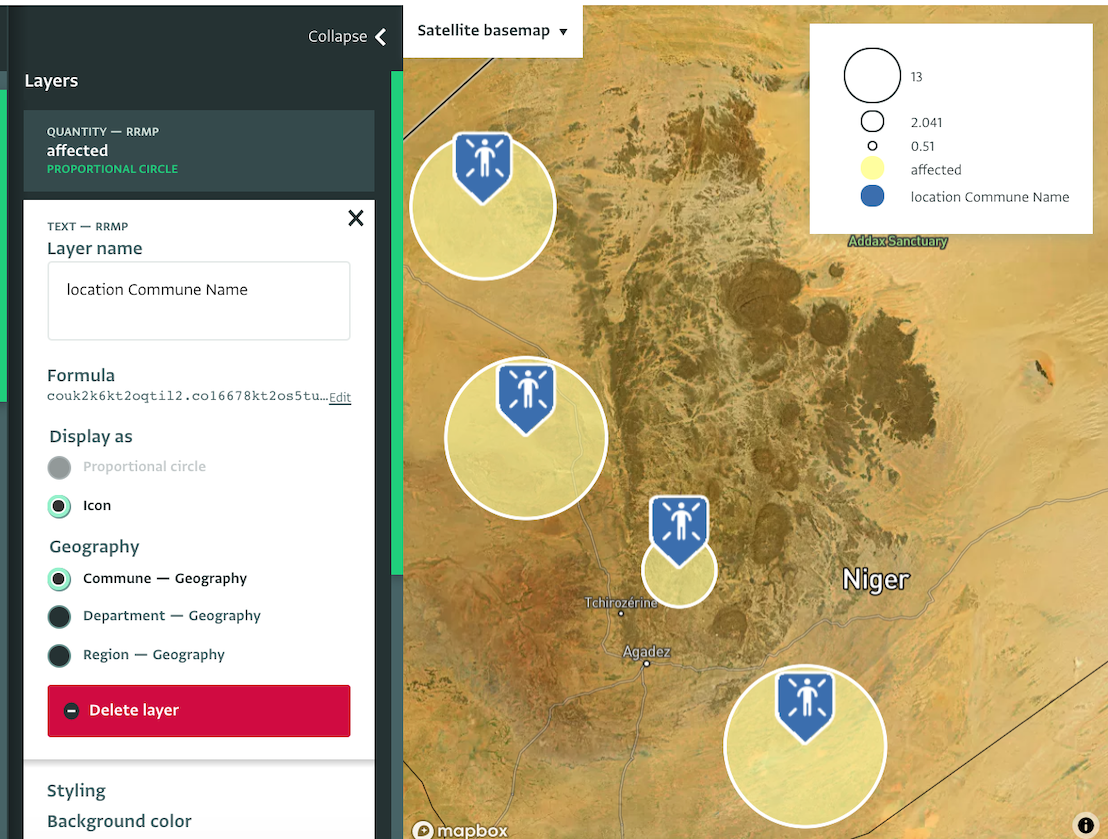ActivityInfo for Rapid Response Mechanisms and emergency response monitoring
ActivityInfo has been designed to offer a flexible, quick and easy-to-deploy information management solution in situations where it is important to have a quick overview of the situation in the field so as to plan, implement, monitor and evaluate an intervention as efficiently as possible. Because it can be set up fast and data entry can start right away the platform has been selected in various cases throughout the years.

Why should I use ActivityInfo to monitor rapid response mechanisms and emergency response programmes?
Being web-based, ActivityInfo allows you to bring together and view data from multiple locations, partners and programmes in real-time and without the need to maintain a server. As often as needed, simply by signing in to the platform, partner organizations can report their data using a desktop or mobile device, online or offline and without the need for complex installations or configurations.
Databases and forms can be designed without requiring knowledge of database management or coding. Advanced permissions ensure that data access is tailored to every user's role in the organization. Data entry can start right away and there is no need for extensive training on using the interface for adding data. The offline capability allows partners to report from remote locations with limited internet connectivity. Collection links allow officers to run crowdsourcing surveys for quicker disaster management response.
The mapping functionalities offer a quick overview of the situation in the field and provide additional information such as the population density, street availability and more. Built-in reporting options and integrations with other software allow officers to conduct and share various types of analysis as the data comes into the platform.
To help you get started, we offer database templates:
- Rapid Response Mechanism database template: includes forms for managing alerts, conducting a field evaluation, monitoring an intervention and conducting a post-intervention follow-up
- Damage report management database template: includes a form for a simple crowdsourcing survey to collect information from the public about damaged entities in an affected area along with a Reviewer’s section – visible only to the disaster management team– to help the team to prioritize the response for the reported damages and make faster decisions on next steps.
Who uses ActivityInfo for Rapid Response Mechanisms and emergency response and how?
Since 2016, the REACH initiative in cooperation with UNICEF in the Central African Republic has been using ActivityInfo as a centralized repository and reference point for the developments related to the Rapid Response Mechanism in the country. Using the platform the information management team keeps track of their achievements versus the targets, views what each partner organization is doing in their activity zone and makes comparisons between years. Read our Case Study to learn more.
ActivityInfo was also used for the Rapid Response to Population Movement Programme in the DRC almost a decade ago. Having a comprehensive overview of all key data in the platform helped in planning the interventions more efficiently so as to respond to pressing needs more efficiently. It also helped correct false impressions and demonstrate why the organization shouldn’t cut back on the assistance provided to the province. This also allowed the team to detect and reconsider overestimated goals. Learn more about this use case in our Case Study.
Another example where the quick deployment of ActivityInfo supported cooperation during fast development of events was during the beginning of the COVID-19 pandemic in Afghanistan. ActivityInfo was adopted as a data management platform for monitoring the COVID-19 response in the country with the support of the Aga Khan Agency for Habitat, Afghanistan (AKAH,A). The platform allowed officers to quickly handle the abundance of information arriving from multiple sources. At the same time, thanks to its simple user interface it was easily adopted and used for data entry by people who were less familiar with online systems. The offline capability made it possible to collect data from more remote locations too. Read our article to learn more about this use case.
How can I procure ActivityInfo for an emergency programme or an RRM?
ActivityInfo has a Global Frame Agreement in place with UNHCR the terms of which we are happy to extend to the UN Secretariat and to UN Technical Agencies. In most cases, other UN Agencies can use the terms of the Frame Agreement to procure ActivityInfo through a streamlined process. Similar to a Long Term Agreement (LTA), it allows offices to directly raise a Purchase Order for a customized Subscription Plan to ActivityInfo. This makes the procurement process simpler and quicker.
Please keep in mind that the organization you are working with may already have an active subscription with ActivityInfo that you can use directly. If you are added to that plan, you will be able to use ActivityInfo without purchasing your own subscription plan. Note that the overall cost of a subscription plan is related to the total number of users under that plan. Not sure if your organization has an active ActivityInfo subscription? Contact us and we will support you with this.
What should I do next?
If you wish to use ActivityInfo for a Rapid Response Mechanism or emergency programme you can start with a Free Trial using the RRM database template (available in English and French) or the Damage report management database template to practice with your first database. You can also master the basics of information management with ActivityInfo following our self-paced online course.
If you prefer a personalized demonstration of ActivityInfo, please contact us.
For a quick overview of this information please download this document.